This post is aimed to those who have more money than they know what to do with, who've made wise investments that allow them to turn a 401K or tax return into a pricey lens acquisition or have had a rich relative leave them some money. This is the article of lenses for whom money is no obstacle to obtaining the gear necessary to do wildlife photography for pay.
The Pricey Lenses
The Main Competitors
Nikon AF-S 300mm f/2.8 VRII G ED
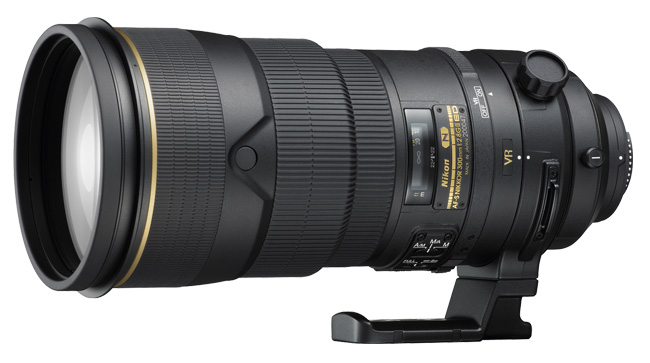
This lens, like it's cousin, the 70-200mm f/2.8 VRII, was designed to be used with the TC-20EIII. Less weighty than it's bigger cousin, the 400mm f/2.8 VR, handholdable, even with a 2x teleconverter, it will give a nice sharp 600mm. Well worth getting as an entry into the professional grade wildlife-lenses, but even then only coupled with either a 1.7x or 2x teleconverter.
Nikon AF-S 400mm f/2.8 G ED VR II IF ED

The Nikon 400mm f/2.8 ED VRII IF-ED is one heavy lens. At 400mm on bare-bones , it needs to be supported by a heavy duty tripod designed for super-telephoto lenses. At f/2.8 , one can stick a 1.4x teleconverter all the way up to a 2x teleconverter without loss of autofocus. This is not a lens that can be hand-held by any stretch of the imagination. And unless supported by a teleconverter, it is still considered at the short-end of the birding photography range of lenses.
Nikon AF-S 500mm f/4G ED VR
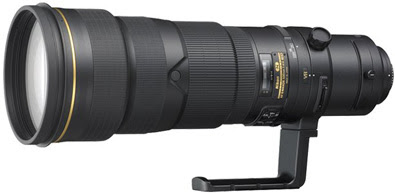
In a switch that makes you wonder, the Nikon 500mm f/4 G ED VR is hand-holdable, up to a certain point. But still any more than 2 minutes holding it and you'll want to stick it onto a monopod or a tripod. But considering it is lighter than it's 100mm shorter cousin, the 500mm gives bird photographers a longer range. The flipside is that it isn't happy with any teleconverter other than a 1.4x TC. With the f/4 maximum aperture, 1.4 TC will drop it down to f/5.6. Any longer TCs on the Nikon AF-S 500mm will send it into manual focus territory.
Nikon AF-S 600mm f/4 G ED VR

This is the Big Mama of the Nikon Range, at least until they bring out their 800mm f/5.6 in an AF-S VR version to compete with Canon's 800mm. This is the lens of every bird and wildlife photographers' dreams. Coupled with a 1.4x teleconverter, it turns into an 840mm f/5.6 monster. This lens is heavy and not to be used without a beanbag or a sturdy super-telephoto rated tripod. Either one of the Induros or the Gitzo systematic tripods. At $10,900.00, the 600mm will make a rather nasty dent in your pocket book too. This is not the type of lens that you want to stick on a rickety lightweight tripod, just because you don't have the cash to buy a sturdy tripod. Save up a bit more and buy a supertelephoto rated tripod along with a gimbal head. Like the 500mm, it will not be happy with a teleconverter longer than the 1.4x. Stick a 1.7x or a 2x on the lens and you're venturing into manual focus territory.
Nikon AF-S 200-400mm f/4 G ED VRII
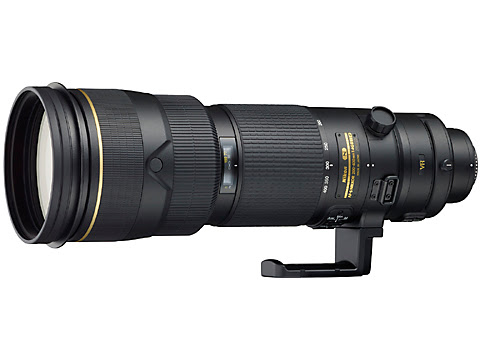
The compromise zoom supertelephoto that Nikon came up with. Now in it's second iteration, the VRII equipped 200-400 is a slight improvement on the original. This lens operates happily with the Nikon TC-14EII or TC-17EII, The 200-400mm VRII is not happy with the TC-20EIII, unless you're comfortable with shooting in manual focus. On the whole this lens is geared towards larger wildlife rather than birds. If you were going to spend $6,000 or $7,000 on a lens, I'd go after the 300mm f/2.8 VRII over the 200-400mm VRII if you're aiming for bird photography.
The Runners-Up
Sigma 300mm f2.8 EX APO HSM

The Sigma 300mm f/2.8 EX APO HSM is a good compromise, but the Sigma extenders only choices are 1.4x and 2x. At a 600mm f/5.6, it's not a bad option if you want to save a couple of thousand dollars. But it's a far cry from using the Nikon 300mm f/2.8 VRII. Sigma tends to shoot a bit bright and faded, but that's nothing a little contrast can't improve. Understand though that 300mm are to be used with TCs if you want range enough to shoot bird photography.
Sigma 500mm f/4.5 EX DG APO HSM
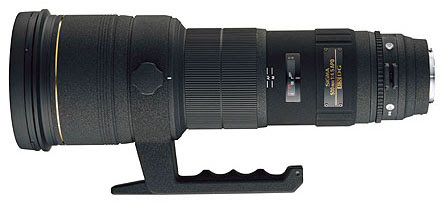
At just a little over $5,000.00, this is probably a good bargain compared to it's comparable Nikon competitor at $8,500.00. This Sigma lens is considerably sharp and other than the slight faded shots from most Sigma lenses that can be improved by contrast, this is well-worth the money.
Sigma 800mm f/5.6 EX DG APO HSM
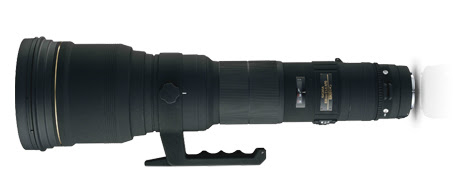
All things considered, in the Nikon mount range, the Sigma 800mm is your only option above 600mm. Until Nikon decides to come out and play with the 800s with an AF-S VR entry (Currently Sigma and Canon), there is no 800mm option other than Sigma.
Sigma 300-800mm f/5.6 EX DG APO HSM

The Sigma 300-800mm is an attractive option, since the aperture is fixed constant at f/5.6 at 300mm through 800mm. Not only does it give the option of zoom, where you can find your subject with the wider focal view of 300mm then zoom into target the subject at 800mm, it gives you the option of standing your ground and not giving away your position to the bird that you are trying to track and photograph. However the cost of this versatile lens is just about as expensive as the 600mm f/4.
So this concludes the list of lenses that one needs for bird photography. Hopefully this gave you an idea of what lenses you might consider when you go to look at acquiring a lens for bird photography.
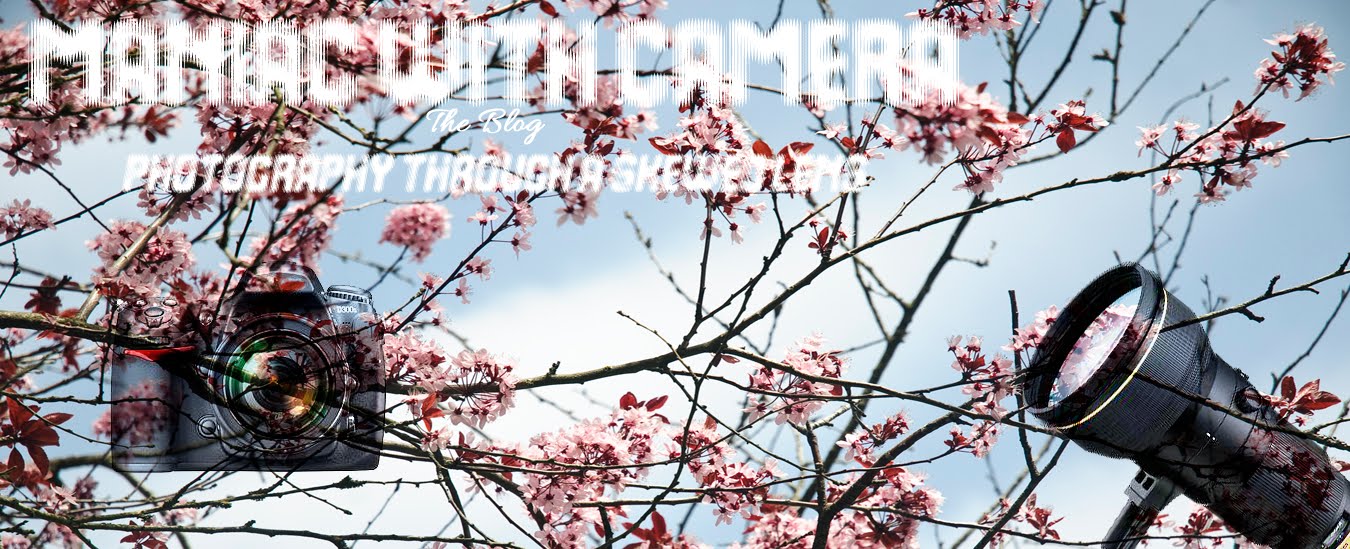
I only have one word.....
ReplyDeleteDROOL